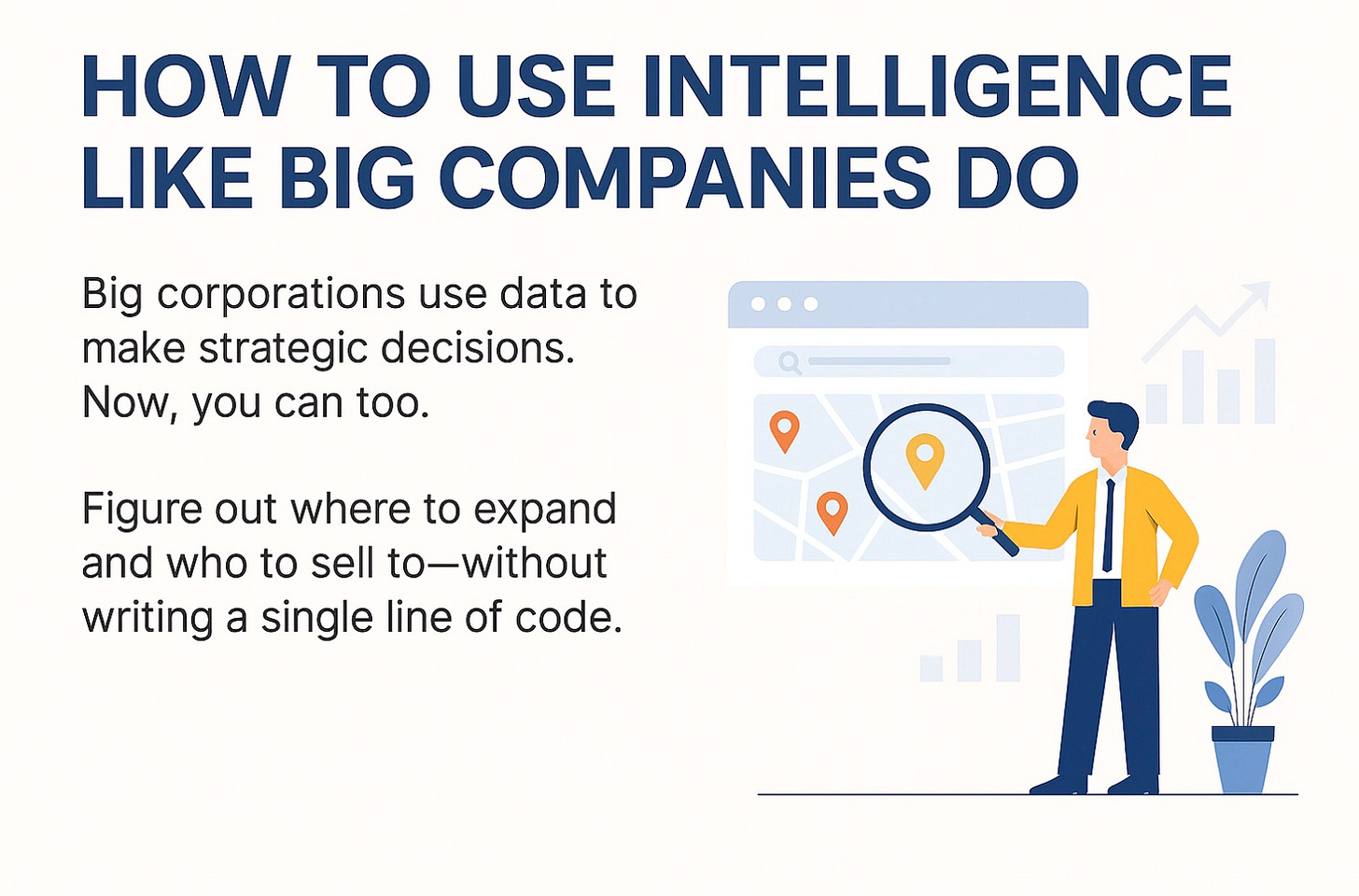What Smart Businesses Do Differently: Turning Public Data into Market Intelligence
This article isn’t just about scraping Google Maps. That’s the starting point — not the goal.
Big corporations are using data to make strategic decisions for decades. They hire consultants, analysts, and pay for incredibly expensive research to figure out where to expand, who to target, and how to outsmart the competition.
Today, thanks to tools like Hexomatic, you can do the same — even as a solo founder or small business — without writing a single line of code or hiring expensive consultants.
Most People Collect Leads. Smart Business Owners Build Intelligence.
If you're selling to other local businesses, you probably already have spreadsheets, cold leads, or maybe a list you bought a while ago. But here’s the truth: most of those are outdated, irrelevant, or simply dead. What if, instead, you could get real, live insights about the businesses in your area right now?
This is where Google Maps scraping with Hexomatic becomes a game-changer.
It’s not just about grabbing names and phone numbers. It’s about:
Seeing which businesses are active and investing in growth
Spotting who’s missing a website (a huge opportunity — or a red flag, depending on what you’re selling)
Understanding who dominates in certain zip codes — and who’s invisible
Finding out which areas are saturated vs. full of untapped potential
This is what real market visibility looks like — and you can do it without any tech background.
Start with One Question: Who Do You Really Want to Reach?
Whether you're offering a service, selling B2B software, or thinking about opening a second location — your strategy starts with understanding the now. Google Maps shows you what’s happening on the ground.
Use search phrases like:
"electricians in Miami Beach zip code 33139"
"coffee shops 90210"
"cleaning services New Jersey"
Just changing a word or format in the search can shift the whole picture. Hexomatic lets you automate this research, pull live business data, and start spotting patterns fast.
Real-World Use Cases That Make This Powerful
Expanding Locations – Scraped by zip codes and quickly saw where competitors had weak presence, big numbers and low reviews, or missing services — perfect spots to expand.
Starting a Business – One customer left a 9–5 job, scraped multiple business types in their area, analyzed what was underserved, and launched a new business with confidence.
Fixing Low Conversion – Many business owners sit on huge lead lists and feel stuck. Our smarter users go deeper: they use Hexomatic + ChatGPT to scrape and analyze prospects’ websites, check reviews, and understand what the business is doing (or missing). Then they filter the list down to the top 10% and focus their outreach there. That’s how you turn a list into real conversations.
And Yes — It’s Easy
It takes just 2–3 minutes to create a basic workflow in Hexomatic. No tech skills. No coding. Just keywords and a clear goal.
You’ll get results in minutes or hours depending on the volume. And if you don’t want to do it yourself? We have a concierge service — tell us what you want, and we’ll do it for you.
Bonus: Add a Bit of Google Search to the Mix
Want to go deeper? Sprinkle in Google Search scraping too. Find niche directories, mentions, partnership leads — and enrich your dataset even more. Think of it like adding salt and pepper to your data.
This Is Just a Slice of What Hexomatic Can Do
Google Maps scraping is only a small part of the Hexomatic toolkit. But even just this slice gives you the kind of market clarity big brands pay consultants tens of thousands (or more) to uncover. You can start for as little as $240/year.
Quick Note on Ethics
Hexomatic works with publicly available data. We always encourage responsible use — scrape what’s public, and use it respectfully for legitimate business development.
Need Help? Let’s Talk.
We get it — not everyone knows where to start. Book a demo call, explain your use case, and we’ll show you how to make it work — or do it for you.
This isn’t about fancy software. This is about getting the data you need to see the market — and act on it.


